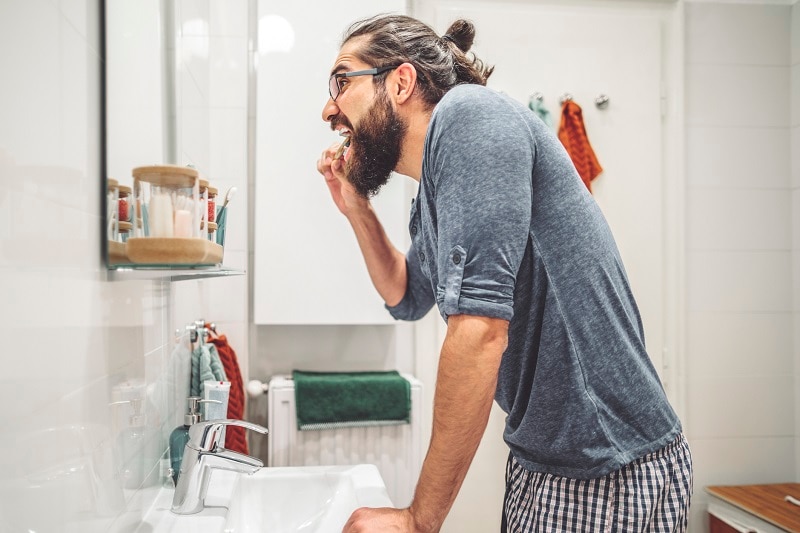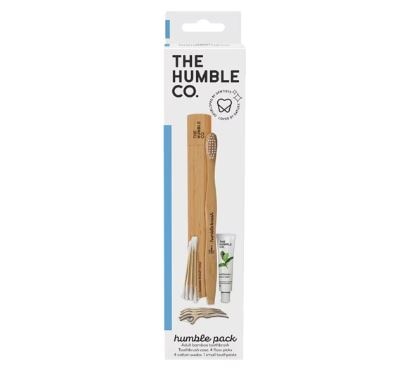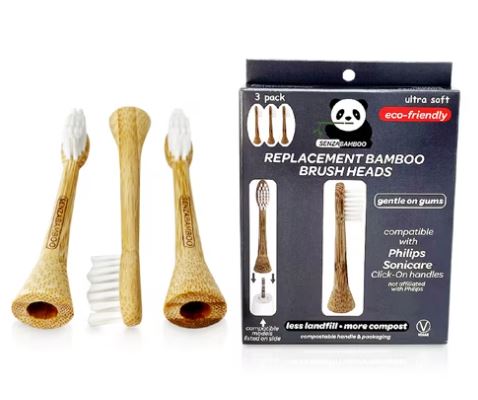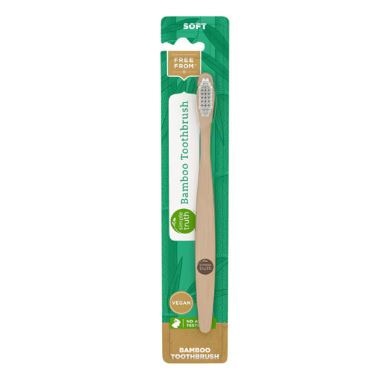Every time I have a dental check-up, my hygienist wants to foist a toothbrush, mini toothpaste and mini dental floss on me. I put the minis to use: toothpaste to meet oppressive TSA flying regulations and floss for my tiny on-the-go bag that includes a clutch of tissues.
Recently though, I started rejecting the toothbrushes because I’ve got a backlog of them. According to the experts, you should change your toothbrush every three to four months or when its bristles splay. My bristles stay intact for much longer so I’m not getting rid of a toothbrush I consider as good as new.
I imagine this de rigueur doling out at dental practices means millions of forlorn toothbrushes are in landfills, used and unused. As it stands, I’ve never been offered a bamboo toothbrush, but I’d prefer it. It would be a welcome shift for the planet at no expense to my mouth.
Why a Bamboo Toothbrush?
The popularity of bamboo toothbrushes is on the rise. I can’t find hard data saying as much, but lots of dental offices have started talking up the alternative on their websites and some market research claims as much. A study looking at the environmental effects of bamboo versus plastic toothbrushes even made its way into a dental journal recently.
Unless you’ve been living under a rock, you know bamboo is more sustainable and healthful than plastic, which barely gets recycled these days, even if marketing efforts tell you otherwise.
If you don’t get free plastic toothbrushes from your hygienist, or you do but want something more virtuous, consider bamboo toothbrushes.
Here’s what we know about bamboo toothbrushes and why they’re worth a try:
They’re a classic
Even though bamboo toothbrushes have become trendy of late, they’re the OG toothbrush, according to the U.S. Library of Congress. The forbear to the bristle toothbrush you used this morning was invented in 1498 in China. Its bristles were stiff hairs taken from the back of hogs’ necks and attached to handles made of bone or bamboo.
They clean your teeth as well as manual plastic or electric toothbrushes
Most bamboo toothbrushes have nylon bristles, same as plastic and electric toothbrushes, except their handles are made of bamboo.
Choose your bamboo toothbrush the same way you would any other: Consider the size of the head, shape of the handle and how soft the bristles are. The pros recommend toothbrushes with soft bristles that you can angle easily in your mouth’s narrow areas, even though harder bristles are better at removing plaque.
They reduce plastic waste
I’ve used old plastic toothbrushes for dozens of duties, trying my darndest to keep them out of landfills and not buy a different tool in their stead. I bet you have too, as a jewelry-cleaning gizmo, blender-blade brush, faucet-drain scrubber, post-gardening fingernail cleaner, laundry-detergent rub-in brush, grout grime-removal tool. At a certain point we all wind up with too many.
Given most bamboo toothbrushes have nylon bristles, that’s the only part you’re burdened with throwing away, along with packaging (some brands have biodegradable packaging, and paper or cardboard packaging can be recycled if it’s not glitzed up with foil or the like).
The bamboo handle can be returned to the earth, whether you compost it, throw it in the woods or stick it in the ground. Keep in mind that if you put bamboo handles in the garbage, they’ll take up landfill space just like plastic toothbrushes do.
Fully biodegradable toothbrushes exist. Their bristles are made of natural fibers — but they “tend to be rougher than nylon bristles,” Colgate notes. If you’re rough on your teeth and gums it’s bad for your enamel and you’ll wind up with receding gums, as we discussed earlier. Those folks in China surely paid the price with coarse hog-neck bristles hundreds of years ago.
They’re the most sustainable option (with one possible exception)
We’ve already established that bamboo is more sustainable than plastic because it can go right back to the earth. It also doesn’t demand the fossil fuels that plastic and electric toothbrushes do on the front end. Broadly, that makes bamboo toothbrushes much more eco-conscious.
That said, using a manual plastic toothbrush with replaceable heads is as sustainable as using a bamboo toothbrush, according to Combining evidence-based healthcare with environmental sustainability: using the toothbrush as a model, which the British Dental Journal published in 2020. Surprised? I was. The study analyzed data on the life cycles of four types of toothbrushes: single-use manual plastic, electric plastic, manual plastic with replaceable heads and manual bamboo.
If you don’t have the ability to compost a bamboo handle or stick it somewhere it’ll decompose — in other words, if your only disposal option is a landfill — a manual brush that has replaceable heads could be best.
But I’m betting you’re in nature a few times a year, which happens to be the frequency with which dental overlords want us to replace toothbrushes and toothbrush heads.




